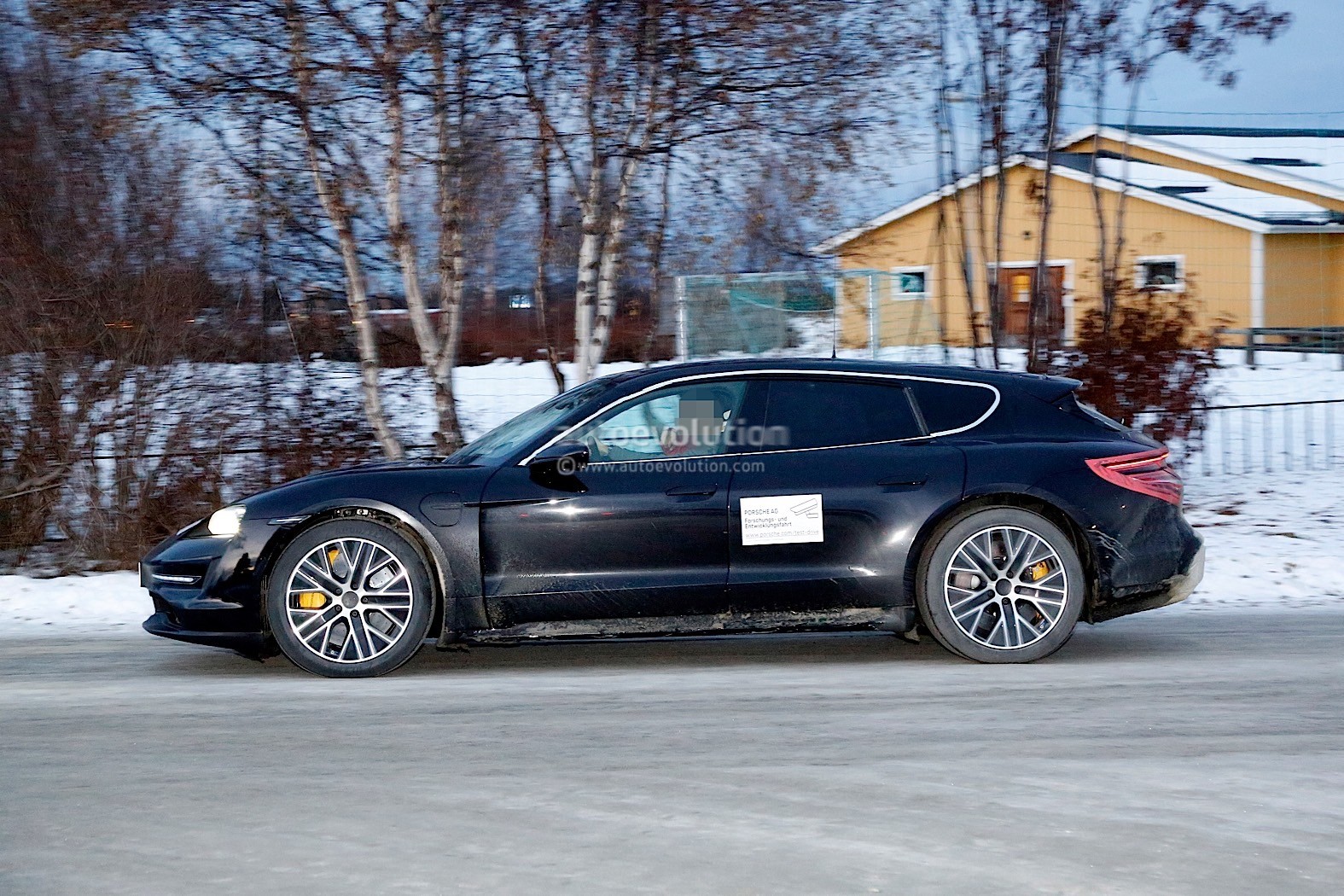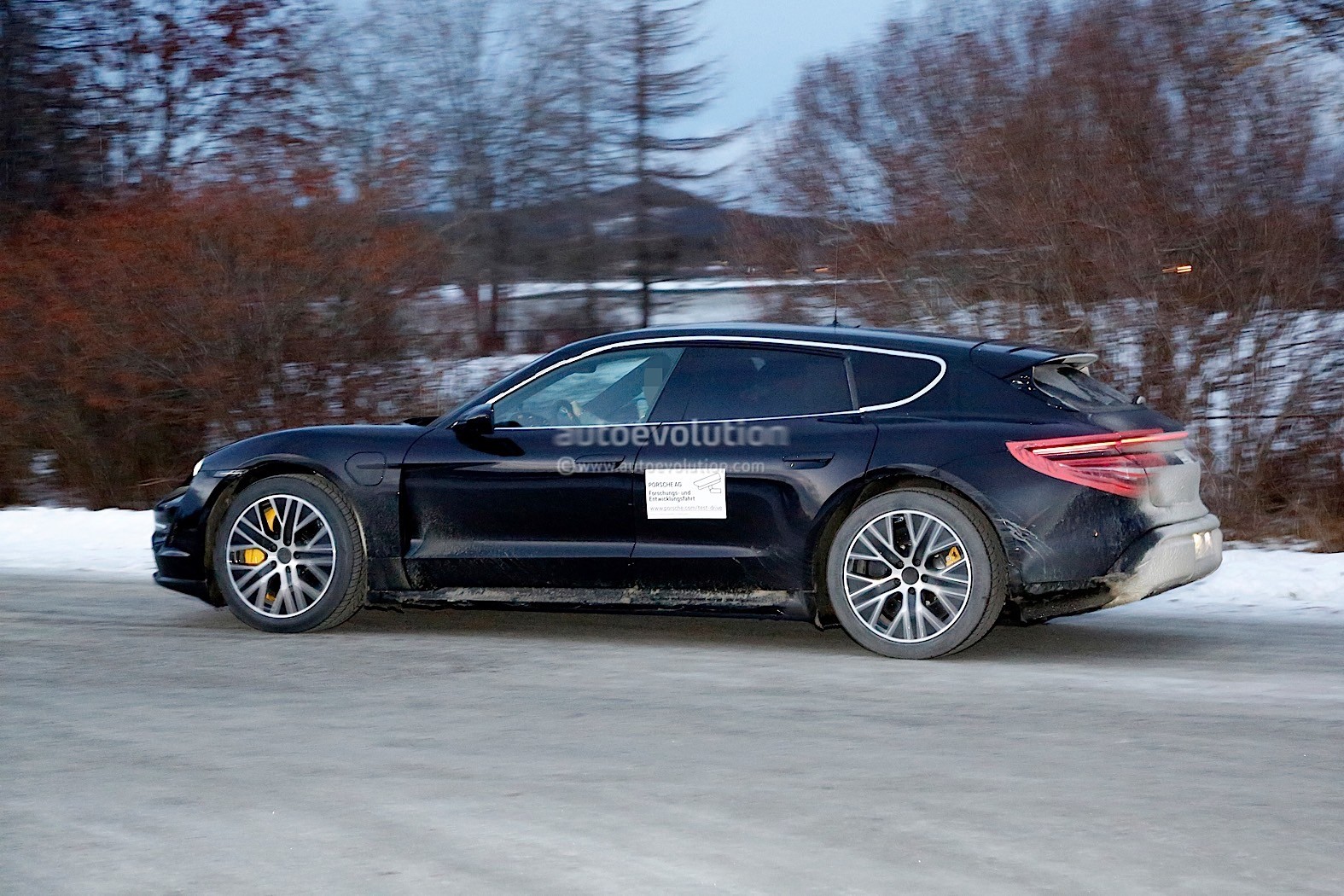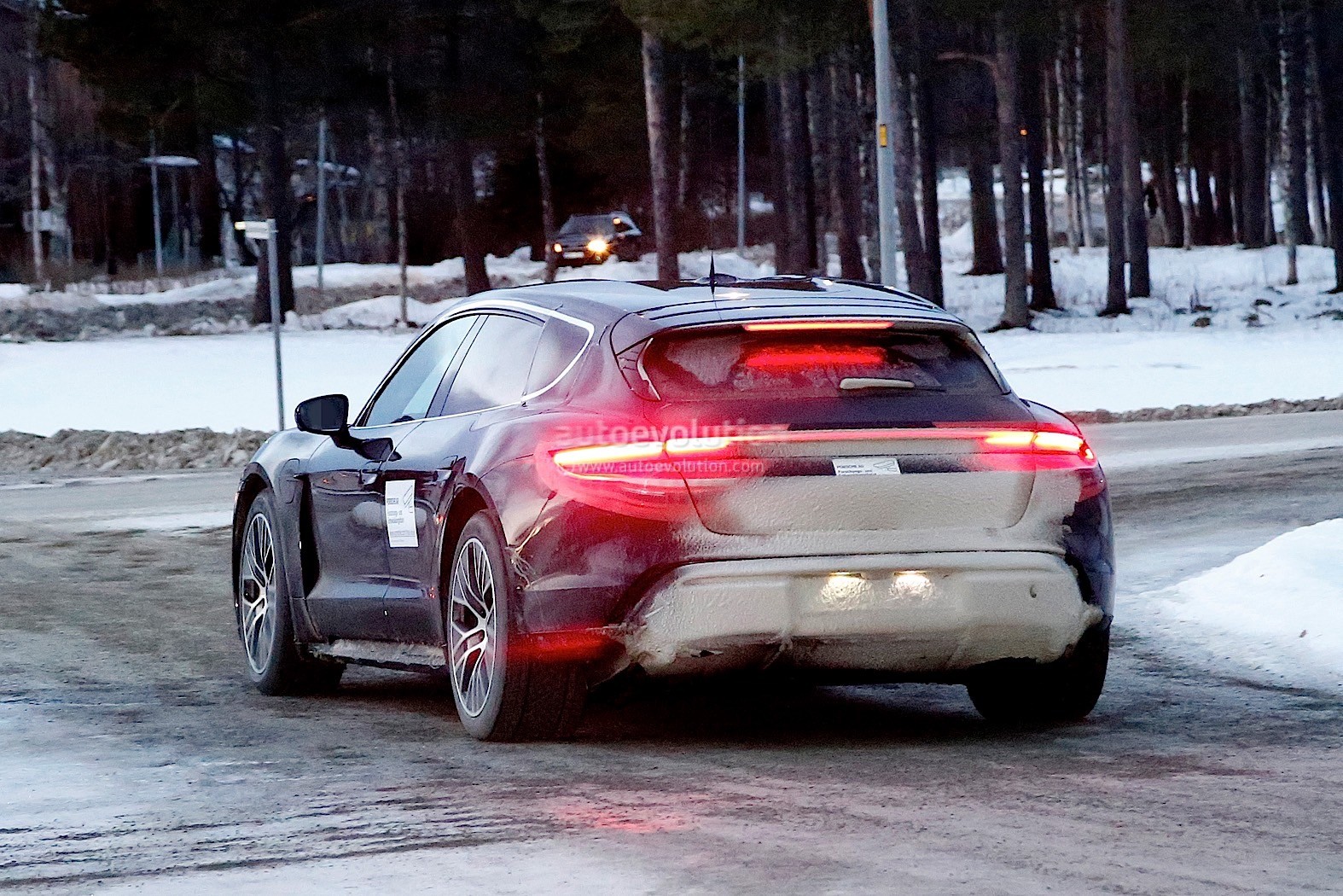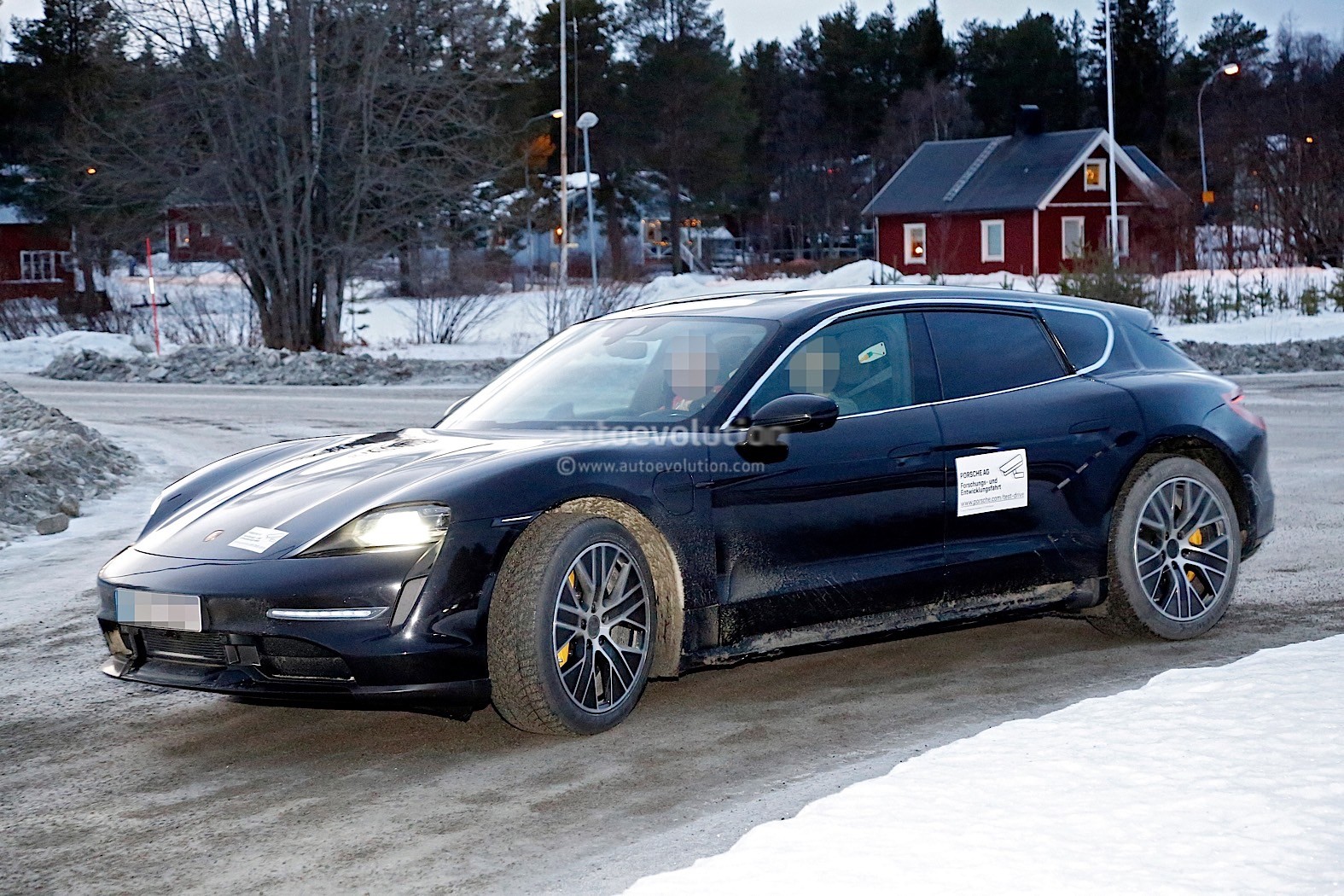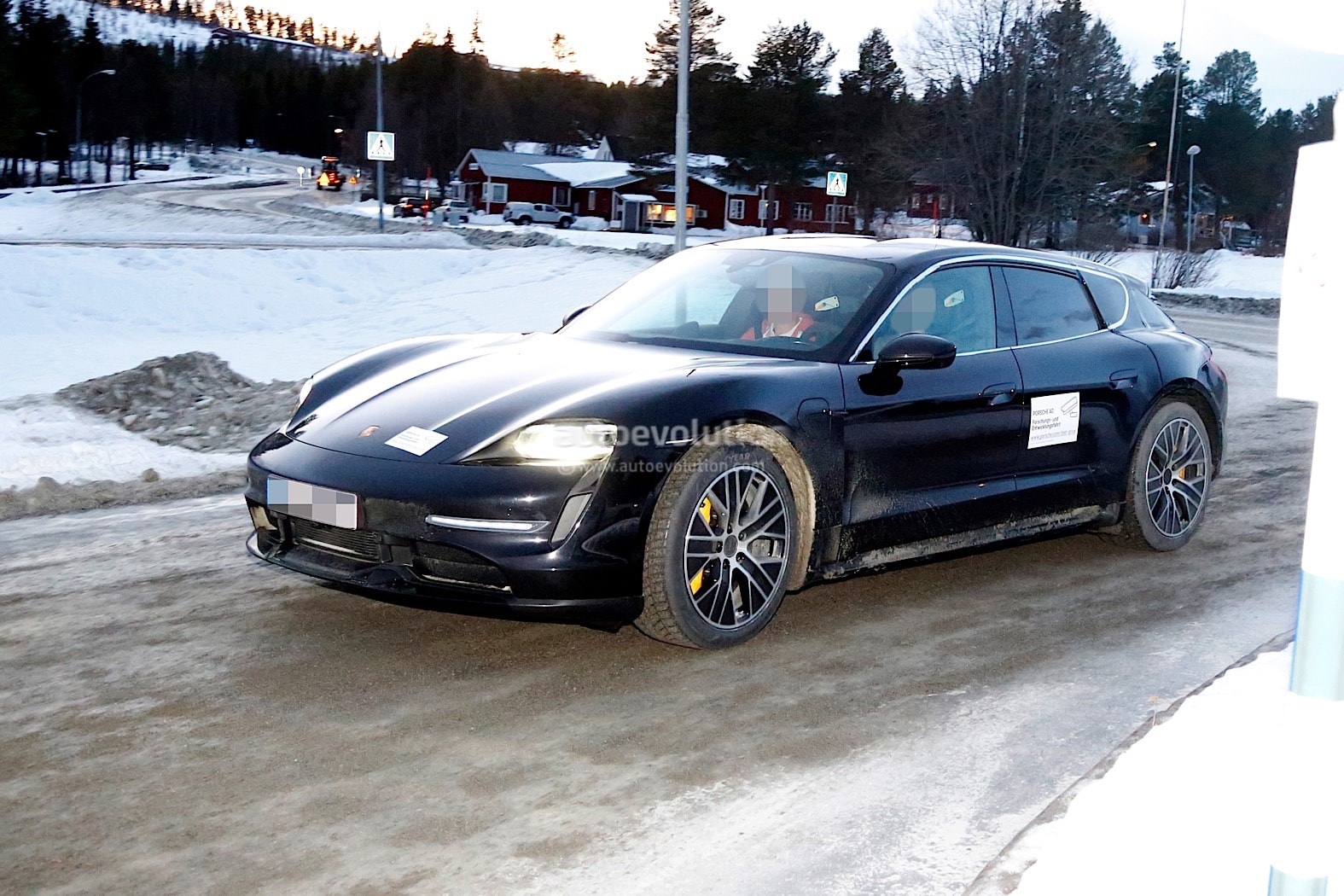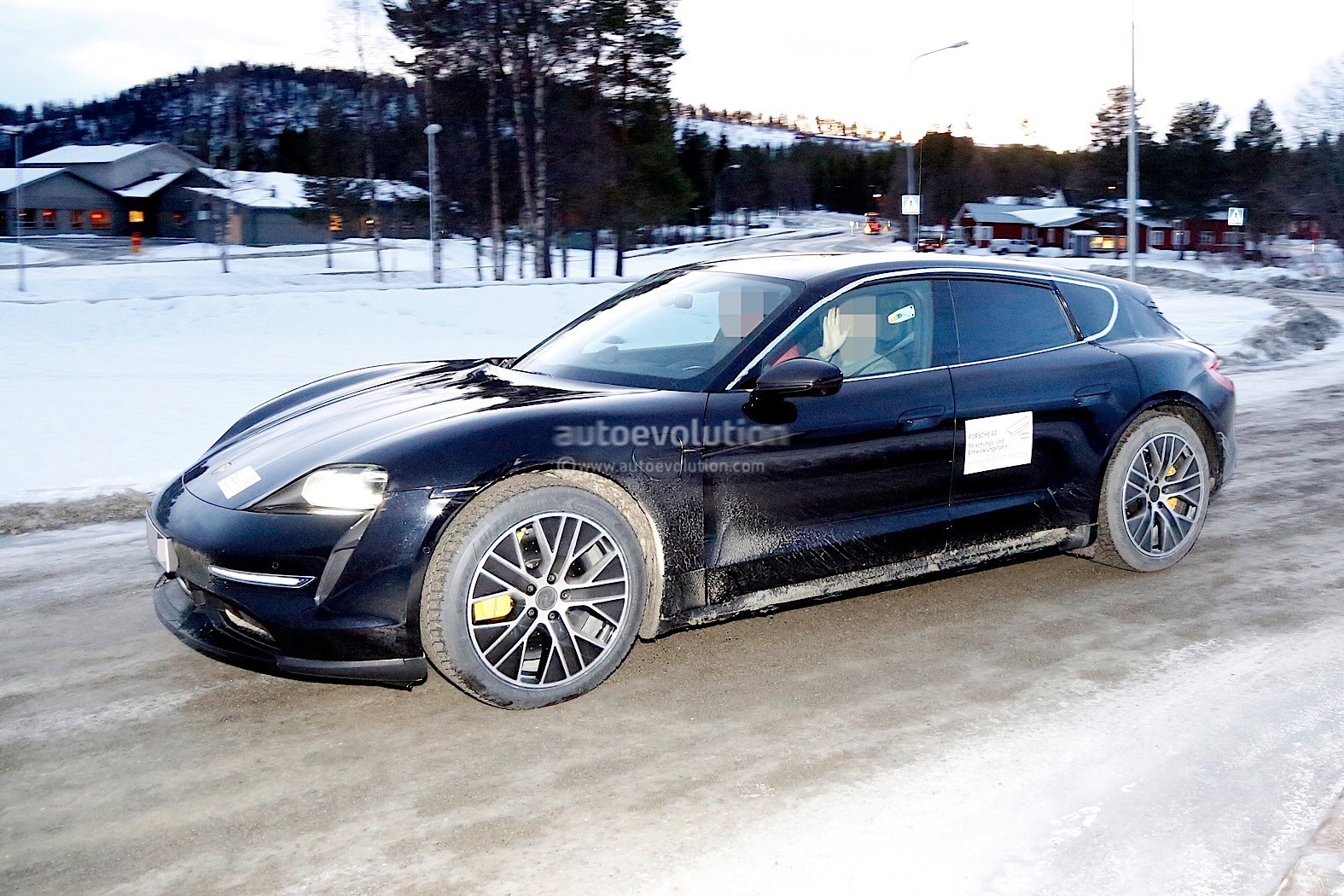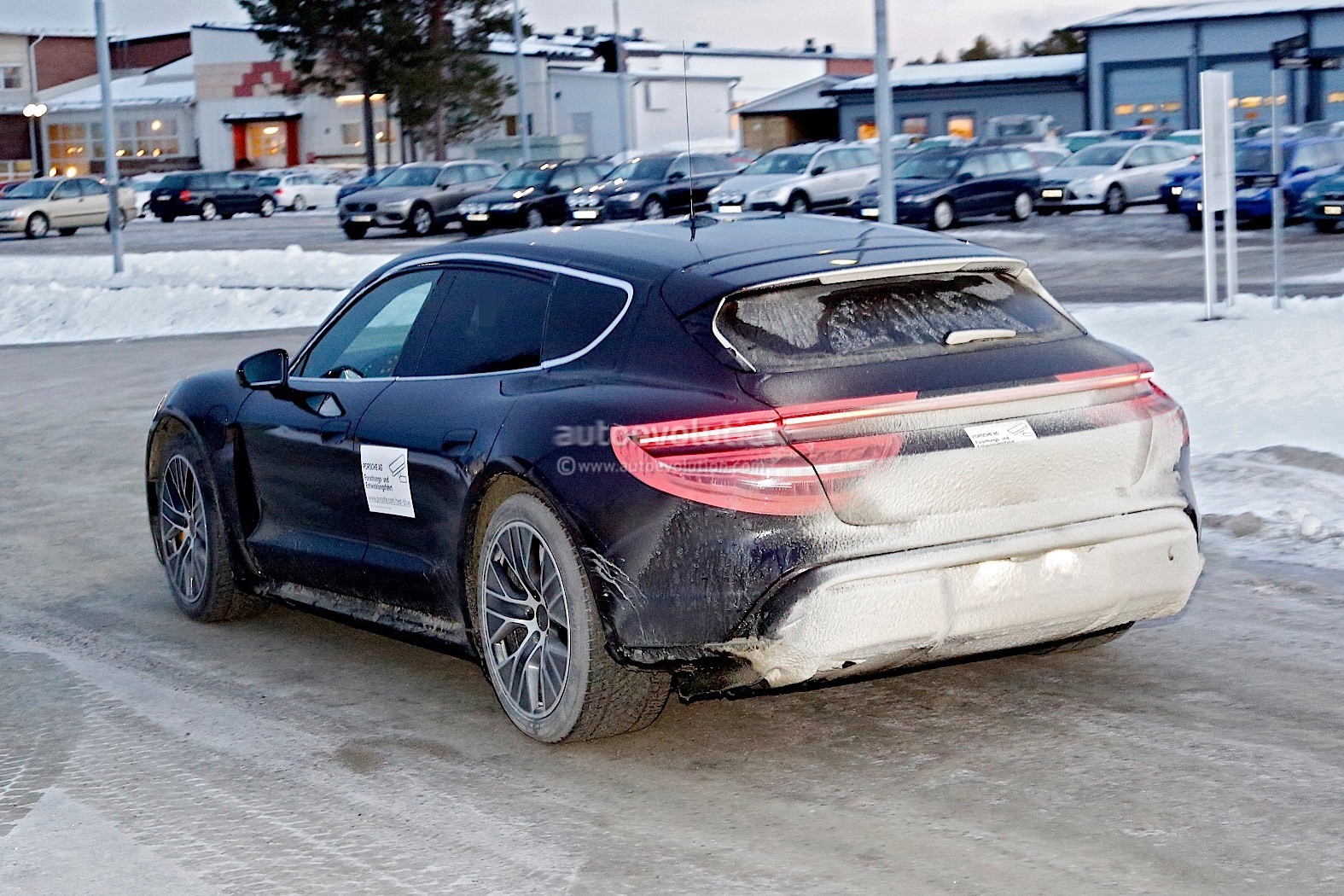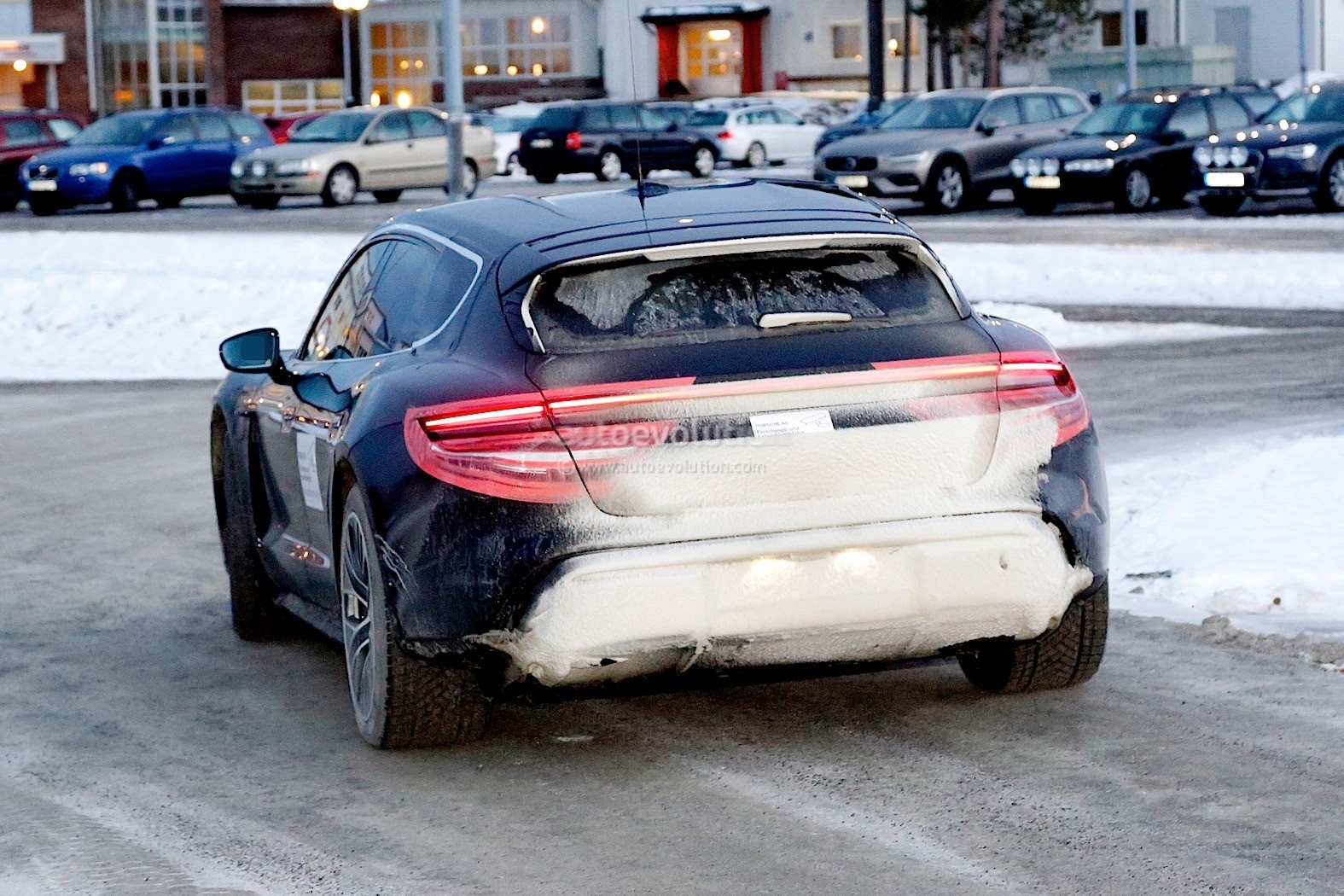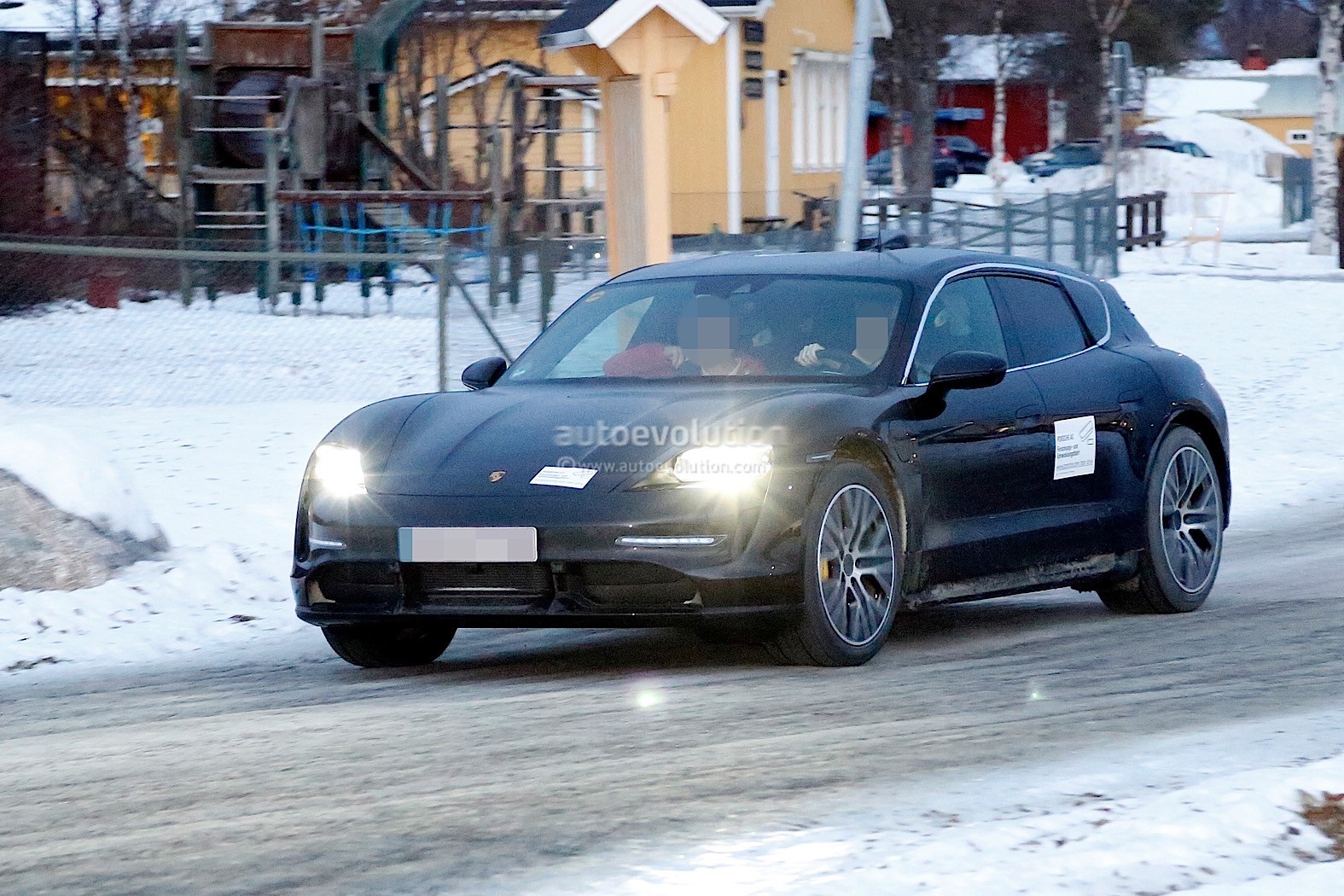Estás utilizando un navegador obsoleto. Puede que este u otros sitios no se muestren correctamente.
Debes actualizarlo o utilizar un navegador alternativo.
Debes actualizarlo o utilizar un navegador alternativo.
Fotos Porsche Taycan 4S, Turbo/S, Cross Turismo
- Iniciador del tema cybermad
- Fecha de inicio
cybermad
Clan Leader
- Modelo
- Z3 2.8 / GR86
- Registrado
- 11 Feb 2008
- Mensajes
- 107.228
- Reacciones
- 94.301
Plato's Porsche Taycan First Drive & Hot Lap | Fifth Gear
31 dic 2020

Fifth Gear
In this brand new video, exclusive to YouTube, Jason goes for a first drive and hot lap in Porsche's all electric Taycan.
31 dic 2020
Fifth Gear
In this brand new video, exclusive to YouTube, Jason goes for a first drive and hot lap in Porsche's all electric Taycan.
- Modelo
- Lockheed SR-71
- Registrado
- 18 Jul 2006
- Mensajes
- 14.228
- Reacciones
- 23.533
Plato's Porsche Taycan First Drive & Hot Lap | Fifth Gear
31 dic 2020

Fifth Gear
In this brand new video, exclusive to YouTube, Jason goes for a first drive and hot lap in Porsche's all electric Taycan.
Curioso peluco gasta Jason.
cybermad
Clan Leader
- Modelo
- Z3 2.8 / GR86
- Registrado
- 11 Feb 2008
- Mensajes
- 107.228
- Reacciones
- 94.301
Si, ahora lleva ese y lo combina con la gorraCurioso peluco gasta Jason.
 la semana pasada probando el Yaris GR también iba así...
la semana pasada probando el Yaris GR también iba así...https://www.bmwfaq.org/threads/toyota-yaris-gr-nuerburgring-btg-7-56.1005197/page-2
Toyota GR Yaris vs Celica GT-Four ST205 - Shootout OLD VS NEW | Fifth Gear
Gulf627
Clan Leader
- Modelo
- E86/S54-G80/S58
- Registrado
- 14 May 2005
- Mensajes
- 30.825
- Reacciones
- 23.515
Última edición:
- Modelo
- Lockheed SR-71
- Registrado
- 18 Jul 2006
- Mensajes
- 14.228
- Reacciones
- 23.533
Que es?
Un Panerai, @Guancho ?
Un PAM, sí, si no me falla la memoria creo que ya lo tiene hace unos años.
cybermad
Clan Leader
- Modelo
- Z3 2.8 / GR86
- Registrado
- 11 Feb 2008
- Mensajes
- 107.228
- Reacciones
- 94.301
Beating The Electric Cannonball Record In A Porsche Taycan 4S
•7 ene 2021

Out of Spec Motoring
Kyle, Drew, and Tijmen head out from NYC on a non-stop journey to Los Angeles in a 2020 Porsche Taycan 4S. This car was equipped with the large battery, aerodynamic wheels, and of course massaging seats. The race is finally on between the Tesla Supercharger network and CCS on the public networks and right now, CCS wins.
•7 ene 2021
Out of Spec Motoring
Kyle, Drew, and Tijmen head out from NYC on a non-stop journey to Los Angeles in a 2020 Porsche Taycan 4S. This car was equipped with the large battery, aerodynamic wheels, and of course massaging seats. The race is finally on between the Tesla Supercharger network and CCS on the public networks and right now, CCS wins.
cybermad
Clan Leader
- Modelo
- Z3 2.8 / GR86
- Registrado
- 11 Feb 2008
- Mensajes
- 107.228
- Reacciones
- 94.301
Un Porsche Taycan acaba de establecer un nuevo récord de ejecución de EV Cannonball Run

8 DE ENERO DE 2021
Un equipo de periodistas acaba de establecer un nuevo récord de conducción por Estados Unidos. El equipo tomó un Porsche Taycan de Nueva York a California en 44:25:59.
El conductor principal, Kyle Conner, es el mismo que estableció el récord anterior, en un Tesla Model 3 Long Range. Junto con Drew Peterson y Tijmen Schreur, el equipo corrió el Taycan por todo el país a una velocidad promedio de 64 mph.
Sin embargo, el récord no solo es impresionante por la velocidad. Una de las principales ventajas que aún tiene Tesla en este tipo de registros es su red de carga . Habiendo tenido más tiempo para establecer su red, los conductores tienen más opciones cuando se trata de ubicaciones de carga.
Sin embargo, la red de Porsche, creada por Electrify America , aparentemente es lo suficientemente buena como para llevar un automóvil a todo el país. El software cartográfico del Taycan también podría haber sido lo suficientemente bueno si no fuera por un error.
Ese error, extrañamente, decidió que el Tayca n estaba en Ohio, independientemente de su ubicación real. Eso hizo que fuera difícil encontrar cargadores, por lo que el equipo se vio obligado a romper los mapas plegables (con los que, por supuesto, me refiero a los teléfonos) y encontrar su propio camino.
Sin embargo, la falla del mapa creó otros problemas. Una de las razones por las que el Taycan se puede cargar del 5 al 80% de la batería en solo 22,5 minutos es por sus preacondicionadores. Estos calientan las baterías cuando el automóvil se acerca a una estación de carga para que esté listo para cargar lo más rápido posible de inmediato.
También vale la pena señalar que la carga no se realiza a la misma velocidad. La carga de una batería se vuelve más difícil cuanto más llena está. Como resultado, cargar una batería del 90 al 100% tomaría más tiempo que cargar una del 20 al 30%.
Entonces, tratar de calcular cuánto tiempo debe cargar entre paradas, se convierte en un delicado acto de equilibrio. Tienes que medir la ansiedad de rango contra la ansiedad de tiempo.
Pero la tripulación parece haberlo resuelto todo, obteniendo el Taycan, con su rango más bajo y una red de carga más pequeña en los EE. UU., Aproximadamente una hora más rápido que el Model 3 que lo precedió, llegando al destino en la noche del Día de Año Nuevo. .
No es una mala forma de recibir el Año Nuevo.

8 DE ENERO DE 2021
Un equipo de periodistas acaba de establecer un nuevo récord de conducción por Estados Unidos. El equipo tomó un Porsche Taycan de Nueva York a California en 44:25:59.
El conductor principal, Kyle Conner, es el mismo que estableció el récord anterior, en un Tesla Model 3 Long Range. Junto con Drew Peterson y Tijmen Schreur, el equipo corrió el Taycan por todo el país a una velocidad promedio de 64 mph.
Sin embargo, el récord no solo es impresionante por la velocidad. Una de las principales ventajas que aún tiene Tesla en este tipo de registros es su red de carga . Habiendo tenido más tiempo para establecer su red, los conductores tienen más opciones cuando se trata de ubicaciones de carga.
Sin embargo, la red de Porsche, creada por Electrify America , aparentemente es lo suficientemente buena como para llevar un automóvil a todo el país. El software cartográfico del Taycan también podría haber sido lo suficientemente bueno si no fuera por un error.
Ese error, extrañamente, decidió que el Tayca n estaba en Ohio, independientemente de su ubicación real. Eso hizo que fuera difícil encontrar cargadores, por lo que el equipo se vio obligado a romper los mapas plegables (con los que, por supuesto, me refiero a los teléfonos) y encontrar su propio camino.
Sin embargo, la falla del mapa creó otros problemas. Una de las razones por las que el Taycan se puede cargar del 5 al 80% de la batería en solo 22,5 minutos es por sus preacondicionadores. Estos calientan las baterías cuando el automóvil se acerca a una estación de carga para que esté listo para cargar lo más rápido posible de inmediato.
También vale la pena señalar que la carga no se realiza a la misma velocidad. La carga de una batería se vuelve más difícil cuanto más llena está. Como resultado, cargar una batería del 90 al 100% tomaría más tiempo que cargar una del 20 al 30%.
Entonces, tratar de calcular cuánto tiempo debe cargar entre paradas, se convierte en un delicado acto de equilibrio. Tienes que medir la ansiedad de rango contra la ansiedad de tiempo.
Pero la tripulación parece haberlo resuelto todo, obteniendo el Taycan, con su rango más bajo y una red de carga más pequeña en los EE. UU., Aproximadamente una hora más rápido que el Model 3 que lo precedió, llegando al destino en la noche del Día de Año Nuevo. .
No es una mala forma de recibir el Año Nuevo.
cybermad
Clan Leader
- Modelo
- Z3 2.8 / GR86
- Registrado
- 11 Feb 2008
- Mensajes
- 107.228
- Reacciones
- 94.301
Uno de los 10 astronautas que pisaron la Luna y hace 50 años condujeron un coche eléctrico por ella, prueba el Taycan...
El general Charlie Duke es uno de los doce hombres que han caminado sobre la superficie de la Luna. Hoy en día, el ex astronauta de 85 años y oficial de la Fuerza Aérea de los EE. UU. Todavía tiene una figura distinguida, su suave tono sureño es cálido y seguro. Duke fue una figura fundamental en el programa Apolo de la NASA, la voz que se escucha hablando de Armstrong y el Águila hacia el primer aterrizaje lunar de la humanidad, antes de seguir esos famosos pasos él mismo menos de tres años después.
Cuando Duke descendió del módulo lunar de Orion al lugar de aterrizaje de Cayley Plains, se convirtió en la décima persona en la historia de la humanidad en poner un pie en la Luna. Él y su compañero astronauta James Young pasarían más de 70 horas en la superficie lunar, tiempo durante el cual llevaron a cabo numerosas misiones de investigación y una evaluación exhaustiva del LRV, o vehículo itinerante lunar.
"En mi opinión, el rover fue el primer automóvil eléctrico realmente confiable, resistente y confiable", dice Duke hoy. “Tenía dos baterías y aproximadamente 100 amperios hora de energía. Cada rueda tenía su propia suspensión independiente y los neumáticos estaban hechos de alambre, lo que pensé que era una locura al principio. Pero alguien tuvo una idea ingeniosa porque los neumáticos de alambre se clavaban en el polvo, lo que te daba una tracción realmente buena ".
En julio de 2021 se cumplen 50 años desde que el primer LRV llegó a la luna, y la misión de Duke es solo la segunda salida de este tipo. A principios de la década de 1970, el LRV era una pieza de tecnología radical por derecho propio, desarrollado en solo 17 meses y con un peso de apenas 210 kg. A pesar de su rápido desarrollo y ese peso minúsculo, el LRV necesitaba ser extraordinariamente resistente y absolutamente fiable. Para agravar el desafío de la ingeniería, también tuvo que empacar y acompañar a los astronautas en su pequeño módulo de comando; el programa de cohetes Saturn V era demasiado costoso para lanzamientos adicionales simplemente para proporcionar equipo.
El vehículo itinerante lunar en la luna
“En la Luna, el auto solo pesaba 80 libras”, dice Duke, “así que podías levantarlo, pero llevaría 1200 libras. Le dimos la vuelta, levantamos los asientos, lo encendimos y nos marchamos. Antes de que llegara el rover, 400 metros era probablemente el límite para caminar. Pero con el rover pudimos ir a seis o siete kilómetros del lugar de aterrizaje y eso ayudó a revolucionar la exploración lunar, ya que obtuvimos muestras de todos estos lugares en los extremos ".
Con tres metros de largo y casi igual de ancho, el LRV usó un chasis de aluminio tubular al que se unió una suspensión de doble horquilla sobre barras de torsión delanteras y traseras, proporcionando una generosa distancia al suelo de 360 milímetros cuando está completamente cargada. Esas ruedas de alambre, superpuestas con un dibujo de la banda de rodadura de galones de titanio, fueron impulsadas independientemente por cuatro motores eléctricos de 0.25 hp y controladas por un joystick en lugar de un volante convencional.
“La cosa subía una pendiente de 25 grados”, recuerda Duke con una sonrisa, “así que el segundo día condujimos hasta Stone Mountain y empezamos a subir. Sentí que me iba a caer por la parte de atrás de la cosa, pero eso no fue tan emocionante como dar la vuelta y bajar cuesta abajo. Me alegro de que estuviéramos atados, ya que esta cosa estaba rebotando como loca ". En total, Duke y Young cubrieron más de 26 km en su LRV, viajando hasta 4.5 km desde el módulo lunar y registrando cerca de tres horas y media de tiempo de conducción. Pero el pequeño vehículo notable aparentemente no estaba en fase.
"No creo que hayamos usado ni la mitad de una batería durante nuestra estadía de tres días allí", dice Duke. “Cuando nos fuimos, dejamos el coche aparcado con la cámara encendida para grabar el despegue. Después del despegue, continuaron moviendo la cámara y las baterías se agotaron varios días después. Fue extremadamente confiable y creo que incluso hoy, si regresáramos con dos baterías, podríamos ponerlas, encenderlo y volver a funcionar. Siempre he dicho que si quieres un coche de 8 millones de dólares con la batería descargada, puedo decirte a dónde ir para conseguir uno ".
A pesar de conducir uno de los vehículos más avanzados e innovadores de la historia de la humanidad, Duke nunca había conducido un EV hasta que Porsche sugirió que tomara el Taycan totalmente eléctrico para dar una breve vuelta en un pequeño aeropuerto cerca de Austin, Texas. Para Porsche fue un honor escuchar las primeras impresiones de un nuevo entorno tecnológico de un hombre bien versado en operar en los límites exteriores de lo que es posible.
"He conducido carritos de golf, por supuesto", dice Duke, "pero aquí en la Tierra nunca había conducido un coche totalmente eléctrico. Pero creo que tengo la misma perspectiva mental para un automóvil nuevo que para un avión. Primero tengo que sentarme allí y asimilarlo todo. La visibilidad y el diseño de la cabina, el acelerador y los controles. Es un automóvil increíble, y la tecnología del Taycan es un orden de magnitud superior a la de nuestro rover ".
Los tres LRV quedaron en la superficie de la luna donde permanecen hasta el día de hoy, pioneros de su época, que aún acumulan polvo lunar medio siglo después. Pero el mundo de abajo sigue girando, y la valentía y la ambición de Duke y sus compañeros astronautas siguen siendo una inspiración a medida que continuamos ampliando los límites de la movilidad. Pequeños pasos, gigantescos saltos.
-----------------------------
Porsche Taycan – A spaceman's first electric drive on earth
•6 ene 2021
General Charlie Duke is one of just a dozen men to have walked on the surface of the Moon. Today, the 85-year-old former astronaut and US Air Force officer still cuts a distinguished figure, his gentle southern lilt warm and assured. Duke was a pivotal figure in NASA’s Apollo programme, the voice you hear talking Armstrong and the Eagle towards mankind’s maiden lunar touchdown, before following in those famous footsteps himself less than three years later.
When Duke descended from the Orion lunar module onto the Cayley Plains landing site, he became only the tenth person in human history to set foot on the Moon. He and fellow astronaut James Young would go on to spend over 70 hours on the lunar surface, during which time they conducted numerous research missions and extensive evaluation of the LRV, or Lunar Roving Vehicle.
“In my view the rover was the first real reliable, rugged and dependable electric car,” Duke says today. “It had two batteries and about 100amp hours of power. Each wheel had its own independent suspension and the tyres were made out of wire, which I thought was crazy at first. But somebody had an ingenious idea because wire tyres would dig into the dust which gave you really good traction.”
July 2021 marks 50 years since the first LRV drove on the moon, with Duke’s mission being only the second outing of its kind. In the early 1970s the LRV was a radical piece of technology in its own right, developed in just 17 months and weighing a mere 210kg. Despite its rapid development and that miniscule weight, the LRV needed to be preternaturally tough and absolutely reliable. To compound the engineering challenge, it also had to pack away and accompany the astronauts in their tiny command module; the Saturn V rocket programme was too costly for extra launches simply to provide equipment.
The Lunar Roving Vehicle on the Moon
“Up on the Moon the car only weighed 80lbs,” says Duke, “so you could pick it up, but it would carry 1200lbs. We turned it around, put up the seats, powered it up and drove off. Before the rover came, 400 metres was probably the limit of walking. But with the rover we could go six or seven kilometres from the landing site and that helped to revolutionise lunar exploration as we got samples from all these places on the extremes.”
Three metres long and almost as wide, the LRV used a tubular aluminium chassis to which was attached double-wishbone suspension over torsion bars front and rear, providing a generous ground clearance of 360 millimetres when fully loaded. Those wire wheels, overlaid with a tread pattern of titanium chevrons, were independently driven by four 0.25hp electric motors and controlled by a joystick rather than a conventional steering wheel.
“The thing would climb a 25 degree slope,” Duke remembers with a smile, “so on the second day we drove down to Stone Mountain and we started up. It felt like I was going to fall out the back of the thing, but that wasn’t nearly as exciting as turning around and going downhill. I’m glad we were strapped in as this thing was bouncing around like crazy.” In total, Duke and Young covered over 26km in their LRV, travelling as far as 4.5 km from the lunar module and clocking up near three and a half hours drive time. But the remarkable little vehicle was apparently unphased.
“I don’t think we used even half of a battery during our three day stay up there,” Duke says. “When we left, we left the car parked with the camera on to record lift off. After lift-off they continued to move the camera around and the batteries went dead several days later. It was extremely reliable and I think even today, if we went back with two batteries we could put them in, power it up and go again. I’ve always said, if you want an $8 million car with a dead battery, I can tell you where to go get one.”
Despite driving one of the most advanced and innovative vehicles in human history, Duke had never driven an EV until Porsche suggested he take the all-electric Taycan for a brief spin at a small airport near Austin, Texas. For Porsche it was an honour to hear the first impressions of a new technological environment from a man well versed in operating at the outer limits of what is possible.
“I’ve driven golf carts of course,” Duke says, “but down here on Earth I had never driven a car that was all-electric. But I think I have the same mental outlook for a new car as I have for an airplane. First I have to sit there and take it all in. The visibility and layout of the cockpit, throttle and controls. It’s an amazing car, and the technology in the Taycan is an order of magnitude over our rover.”
All three LRVs were left on the moon’s surface where they remain to this day, pioneers of their era, still gathering moon dust half a century on. But the world below keeps spinning, and the bravery and ambition of Duke and his fellow astronauts remains an inspiration as we continue to push the boundaries of mobility. Small steps, giants leaps.
El general Charlie Duke es uno de los doce hombres que han caminado sobre la superficie de la Luna. Hoy en día, el ex astronauta de 85 años y oficial de la Fuerza Aérea de los EE. UU. Todavía tiene una figura distinguida, su suave tono sureño es cálido y seguro. Duke fue una figura fundamental en el programa Apolo de la NASA, la voz que se escucha hablando de Armstrong y el Águila hacia el primer aterrizaje lunar de la humanidad, antes de seguir esos famosos pasos él mismo menos de tres años después.
Cuando Duke descendió del módulo lunar de Orion al lugar de aterrizaje de Cayley Plains, se convirtió en la décima persona en la historia de la humanidad en poner un pie en la Luna. Él y su compañero astronauta James Young pasarían más de 70 horas en la superficie lunar, tiempo durante el cual llevaron a cabo numerosas misiones de investigación y una evaluación exhaustiva del LRV, o vehículo itinerante lunar.
"En mi opinión, el rover fue el primer automóvil eléctrico realmente confiable, resistente y confiable", dice Duke hoy. “Tenía dos baterías y aproximadamente 100 amperios hora de energía. Cada rueda tenía su propia suspensión independiente y los neumáticos estaban hechos de alambre, lo que pensé que era una locura al principio. Pero alguien tuvo una idea ingeniosa porque los neumáticos de alambre se clavaban en el polvo, lo que te daba una tracción realmente buena ".
En julio de 2021 se cumplen 50 años desde que el primer LRV llegó a la luna, y la misión de Duke es solo la segunda salida de este tipo. A principios de la década de 1970, el LRV era una pieza de tecnología radical por derecho propio, desarrollado en solo 17 meses y con un peso de apenas 210 kg. A pesar de su rápido desarrollo y ese peso minúsculo, el LRV necesitaba ser extraordinariamente resistente y absolutamente fiable. Para agravar el desafío de la ingeniería, también tuvo que empacar y acompañar a los astronautas en su pequeño módulo de comando; el programa de cohetes Saturn V era demasiado costoso para lanzamientos adicionales simplemente para proporcionar equipo.
El vehículo itinerante lunar en la luna
“En la Luna, el auto solo pesaba 80 libras”, dice Duke, “así que podías levantarlo, pero llevaría 1200 libras. Le dimos la vuelta, levantamos los asientos, lo encendimos y nos marchamos. Antes de que llegara el rover, 400 metros era probablemente el límite para caminar. Pero con el rover pudimos ir a seis o siete kilómetros del lugar de aterrizaje y eso ayudó a revolucionar la exploración lunar, ya que obtuvimos muestras de todos estos lugares en los extremos ".
Con tres metros de largo y casi igual de ancho, el LRV usó un chasis de aluminio tubular al que se unió una suspensión de doble horquilla sobre barras de torsión delanteras y traseras, proporcionando una generosa distancia al suelo de 360 milímetros cuando está completamente cargada. Esas ruedas de alambre, superpuestas con un dibujo de la banda de rodadura de galones de titanio, fueron impulsadas independientemente por cuatro motores eléctricos de 0.25 hp y controladas por un joystick en lugar de un volante convencional.
“La cosa subía una pendiente de 25 grados”, recuerda Duke con una sonrisa, “así que el segundo día condujimos hasta Stone Mountain y empezamos a subir. Sentí que me iba a caer por la parte de atrás de la cosa, pero eso no fue tan emocionante como dar la vuelta y bajar cuesta abajo. Me alegro de que estuviéramos atados, ya que esta cosa estaba rebotando como loca ". En total, Duke y Young cubrieron más de 26 km en su LRV, viajando hasta 4.5 km desde el módulo lunar y registrando cerca de tres horas y media de tiempo de conducción. Pero el pequeño vehículo notable aparentemente no estaba en fase.
"No creo que hayamos usado ni la mitad de una batería durante nuestra estadía de tres días allí", dice Duke. “Cuando nos fuimos, dejamos el coche aparcado con la cámara encendida para grabar el despegue. Después del despegue, continuaron moviendo la cámara y las baterías se agotaron varios días después. Fue extremadamente confiable y creo que incluso hoy, si regresáramos con dos baterías, podríamos ponerlas, encenderlo y volver a funcionar. Siempre he dicho que si quieres un coche de 8 millones de dólares con la batería descargada, puedo decirte a dónde ir para conseguir uno ".
A pesar de conducir uno de los vehículos más avanzados e innovadores de la historia de la humanidad, Duke nunca había conducido un EV hasta que Porsche sugirió que tomara el Taycan totalmente eléctrico para dar una breve vuelta en un pequeño aeropuerto cerca de Austin, Texas. Para Porsche fue un honor escuchar las primeras impresiones de un nuevo entorno tecnológico de un hombre bien versado en operar en los límites exteriores de lo que es posible.
"He conducido carritos de golf, por supuesto", dice Duke, "pero aquí en la Tierra nunca había conducido un coche totalmente eléctrico. Pero creo que tengo la misma perspectiva mental para un automóvil nuevo que para un avión. Primero tengo que sentarme allí y asimilarlo todo. La visibilidad y el diseño de la cabina, el acelerador y los controles. Es un automóvil increíble, y la tecnología del Taycan es un orden de magnitud superior a la de nuestro rover ".
Los tres LRV quedaron en la superficie de la luna donde permanecen hasta el día de hoy, pioneros de su época, que aún acumulan polvo lunar medio siglo después. Pero el mundo de abajo sigue girando, y la valentía y la ambición de Duke y sus compañeros astronautas siguen siendo una inspiración a medida que continuamos ampliando los límites de la movilidad. Pequeños pasos, gigantescos saltos.
-----------------------------
Porsche Taycan – A spaceman's first electric drive on earth
•6 ene 2021
General Charlie Duke is one of just a dozen men to have walked on the surface of the Moon. Today, the 85-year-old former astronaut and US Air Force officer still cuts a distinguished figure, his gentle southern lilt warm and assured. Duke was a pivotal figure in NASA’s Apollo programme, the voice you hear talking Armstrong and the Eagle towards mankind’s maiden lunar touchdown, before following in those famous footsteps himself less than three years later.
When Duke descended from the Orion lunar module onto the Cayley Plains landing site, he became only the tenth person in human history to set foot on the Moon. He and fellow astronaut James Young would go on to spend over 70 hours on the lunar surface, during which time they conducted numerous research missions and extensive evaluation of the LRV, or Lunar Roving Vehicle.
“In my view the rover was the first real reliable, rugged and dependable electric car,” Duke says today. “It had two batteries and about 100amp hours of power. Each wheel had its own independent suspension and the tyres were made out of wire, which I thought was crazy at first. But somebody had an ingenious idea because wire tyres would dig into the dust which gave you really good traction.”
July 2021 marks 50 years since the first LRV drove on the moon, with Duke’s mission being only the second outing of its kind. In the early 1970s the LRV was a radical piece of technology in its own right, developed in just 17 months and weighing a mere 210kg. Despite its rapid development and that miniscule weight, the LRV needed to be preternaturally tough and absolutely reliable. To compound the engineering challenge, it also had to pack away and accompany the astronauts in their tiny command module; the Saturn V rocket programme was too costly for extra launches simply to provide equipment.
The Lunar Roving Vehicle on the Moon
“Up on the Moon the car only weighed 80lbs,” says Duke, “so you could pick it up, but it would carry 1200lbs. We turned it around, put up the seats, powered it up and drove off. Before the rover came, 400 metres was probably the limit of walking. But with the rover we could go six or seven kilometres from the landing site and that helped to revolutionise lunar exploration as we got samples from all these places on the extremes.”
Three metres long and almost as wide, the LRV used a tubular aluminium chassis to which was attached double-wishbone suspension over torsion bars front and rear, providing a generous ground clearance of 360 millimetres when fully loaded. Those wire wheels, overlaid with a tread pattern of titanium chevrons, were independently driven by four 0.25hp electric motors and controlled by a joystick rather than a conventional steering wheel.
“The thing would climb a 25 degree slope,” Duke remembers with a smile, “so on the second day we drove down to Stone Mountain and we started up. It felt like I was going to fall out the back of the thing, but that wasn’t nearly as exciting as turning around and going downhill. I’m glad we were strapped in as this thing was bouncing around like crazy.” In total, Duke and Young covered over 26km in their LRV, travelling as far as 4.5 km from the lunar module and clocking up near three and a half hours drive time. But the remarkable little vehicle was apparently unphased.
“I don’t think we used even half of a battery during our three day stay up there,” Duke says. “When we left, we left the car parked with the camera on to record lift off. After lift-off they continued to move the camera around and the batteries went dead several days later. It was extremely reliable and I think even today, if we went back with two batteries we could put them in, power it up and go again. I’ve always said, if you want an $8 million car with a dead battery, I can tell you where to go get one.”
Despite driving one of the most advanced and innovative vehicles in human history, Duke had never driven an EV until Porsche suggested he take the all-electric Taycan for a brief spin at a small airport near Austin, Texas. For Porsche it was an honour to hear the first impressions of a new technological environment from a man well versed in operating at the outer limits of what is possible.
“I’ve driven golf carts of course,” Duke says, “but down here on Earth I had never driven a car that was all-electric. But I think I have the same mental outlook for a new car as I have for an airplane. First I have to sit there and take it all in. The visibility and layout of the cockpit, throttle and controls. It’s an amazing car, and the technology in the Taycan is an order of magnitude over our rover.”
All three LRVs were left on the moon’s surface where they remain to this day, pioneers of their era, still gathering moon dust half a century on. But the world below keeps spinning, and the bravery and ambition of Duke and his fellow astronauts remains an inspiration as we continue to push the boundaries of mobility. Small steps, giants leaps.
cybermad
Clan Leader
- Modelo
- Z3 2.8 / GR86
- Registrado
- 11 Feb 2008
- Mensajes
- 107.228
- Reacciones
- 94.301
Electric Pioneers: 50 Years Since Humankind First Drove on the Moon

Porsche
As the Lunar Module pilot on Apollo 16, Charles ‘Charlie’ Duke became the tenth person to step onto the moon and one of only six people to experience the Lunar Roving Vehicle (LRV) - one of the most advanced, innovative electric vehicles ever. And yet, until recently, he hadn’t driven an electric car on earth. To mark the 50th anniversary of the first LRV landings on the lunar surface, he did just that. Behind the wheel of a Porsche Taycan.
Porsche
As the Lunar Module pilot on Apollo 16, Charles ‘Charlie’ Duke became the tenth person to step onto the moon and one of only six people to experience the Lunar Roving Vehicle (LRV) - one of the most advanced, innovative electric vehicles ever. And yet, until recently, he hadn’t driven an electric car on earth. To mark the 50th anniversary of the first LRV landings on the lunar surface, he did just that. Behind the wheel of a Porsche Taycan.
cybermad
Clan Leader
- Modelo
- Z3 2.8 / GR86
- Registrado
- 11 Feb 2008
- Mensajes
- 107.228
- Reacciones
- 94.301
The Craft behind the Taycan || 05 | Digital Sound Systems
•7 ene 2021
Porsche
On this fifth episode following the Craftsmen behind the Taycan, digital sound is explored. It all starts with the technologies we use, enabling us to success in providing a remarkable sound system in an electric drive.
cybermad
Clan Leader
- Modelo
- Z3 2.8 / GR86
- Registrado
- 11 Feb 2008
- Mensajes
- 107.228
- Reacciones
- 94.301
Hace un par de días presentaron el Taycan de acceso, el primero de la saga que es trasera y creo que es el más interesante, puse un hilo específico:
https://www.bmwfaq.org/threads/porsche-taycan-rwd-71kwh-431km-85-710-83-7kwh-484km-91-530.1008297/
https://www.bmwfaq.org/threads/porsche-taycan-rwd-71kwh-431km-85-710-83-7kwh-484km-91-530.1008297/
Similar threads
- Respuestas
- 73
- Visitas
- 5K
- Respuestas
- 54
- Visitas
- 5K
- Respuestas
- 45
- Visitas
- 5K
- Respuestas
- 126
- Visitas
- 12K

